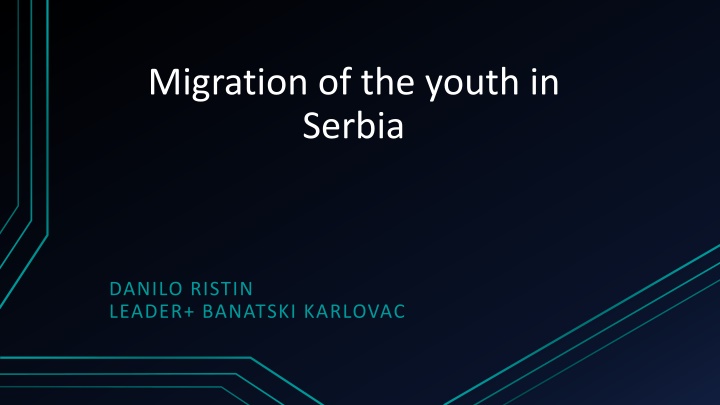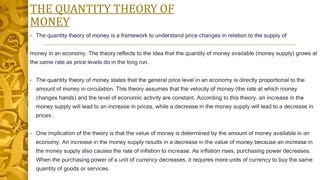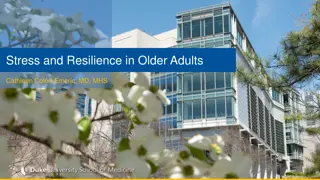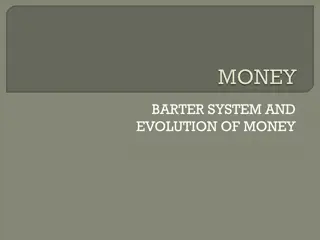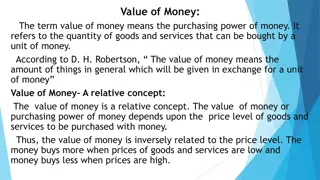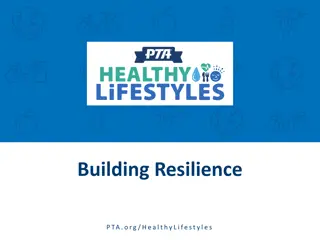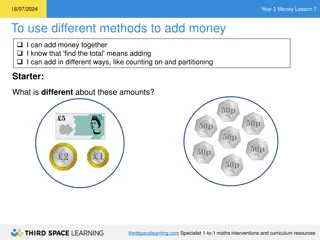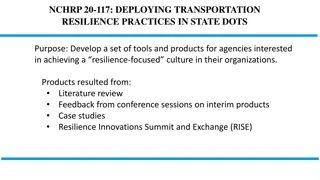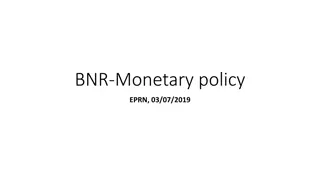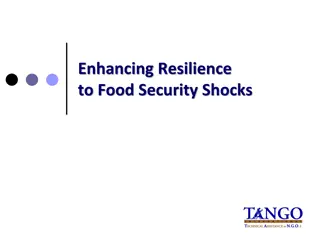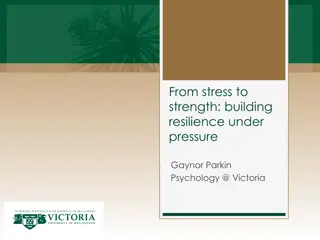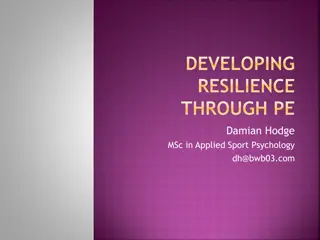Reflections on Resilience: Empowering Money and Values
In this series, explore how money can be a source of empowerment instead of emotional burden. Delve into defining values and understanding financial strategies for a resilient future.
Download Presentation

Please find below an Image/Link to download the presentation.
The content on the website is provided AS IS for your information and personal use only. It may not be sold, licensed, or shared on other websites without obtaining consent from the author.If you encounter any issues during the download, it is possible that the publisher has removed the file from their server.
You are allowed to download the files provided on this website for personal or commercial use, subject to the condition that they are used lawfully. All files are the property of their respective owners.
The content on the website is provided AS IS for your information and personal use only. It may not be sold, licensed, or shared on other websites without obtaining consent from the author.
E N D
Presentation Transcript
Migration of the youth in Serbia DANILO RISTIN LEADER+ BANATSKI KARLOVAC
Outland Serbia is traditionally a land of emigration. Most popular countries are Germany, Austria, Switzerland and Sweden, to which the persons with elementary and secondary education go Overseas countries are interesting for students and highly educated people New popular destinations are Italy (appealing for those with high school education) and Great Britain (popular with the most educated young people).
Among the new countries of the European Union, the most important destinations for citizens of Serbia are Slovenia and Hungary. According to Migration management strategy - An estimate of the number of Serbian diaspora, made by the Ministry of Diaspora, is approximately 4millions (ranges from 3,908,000 to 4,170,000 persons.)
12000000 10000000 8000000 6000000 4000000 2000000 0 Serbians In Serbia Diaspora Total
Vladimir Petronijevi- Director of the Group 484 " Migration in Serbia in most cases is a one-way ticket . What we call circular migration is not present. It is not, therefore, the problem of people leaving, mobility is actually the basis of the European Union, but rather that they do not return and have no contact with the country of origin once they leave. They can only acquire certain knowledge in the West, but the real question is why we do not use that knowledge in Serbia? The problem of medical workers in Germany arose because their doctors started leaving to the countries where they could earn even better and improve themselves professionally. Now we should see if there may be some countries in Eastern Europe, or in the East in general, from which Serbia could attract the missing personnel? We have to be a part of this global migration movement and we have to set up a system that is able to offer something "
Inland During 2014, 124,472 persons changed their place of residence, that is, moved from one settlement to another on the territory of the Republic of Serbia. The average age of the people who changed their residence is 33.2 years. Out of the total of 24 areas in the Republic of Serbia, the largest number of migratory movements were recorded on the territory of the Belgrade region, and only this region had a positive migration balance (a higher number of immigrants compared to the emigrants).
Out of 168 municipalities / cities of the Republic of Serbia, 35 municipalities / cities had a positive migration balance in 2014, and in 133 municipalities / cities, a negative migration balance was recorded. Every year, about 250,000 people in Serbia move from the country to the cities. Serbia is facing depopulation of certain areas, which has both demographic and economic consequences. If we add to this the material investments in the education of inhabitants, which are measured by millions of euros (about 4.5% of GDP), emigration of the highly educated workforce leaves these investments practically unused.
The last census was made in 2011, so it is not possible to accurately determine the statistics of the current situation, because it was 8 years ago. Most of researches on youth migration are based on information from the 2011 census , so there are not many sources which show the current situation. The 2013 statistics show that the youth unemployment rate in the EU was 23.4% for young people aged 15-24, while in August 2014 the youth unemployment rate in Serbia was 41.7% for young people aged between 15 and 24 and 33.27% for young people aged between 15 and 30. The unemployment rate is the highest for the age 15-24.
Unemployment 45 40 35 30 25 20 15 10 5 0 Youth aged 15-24 EU 2013 Serbia 2014
What students want? Want to work abroad Want to work in Serbia 82% of students in Serbia want to find work outside the borders of Serbia
Policies and initiatives on encouraging young people to stay and work in their home town
National Youth strategy 2015-2025 National Youth Strategy 2015-2025 represents a comprehensive document outlining the priority objectives which implementation should contribute to an active and equal participation of young people in various areas of social life.
Principles: Support for personal and social empowerment of youth Respect for human and minority rights, equality and non- discrimination Equal opportunities for all Importance of young people and their social roles Active youth participation and cooperation Social responsibility and solidarity
Goals: Employability and employment of young women and men Quality and opportunities for acquiring qualifications and development of competencies and innovation of young people Active participation of young women and men in society Health and well-being of young women and men Conditions for the development of youth safety culture Support to social inclusion of young people at risk of social exclusion Mobility, scope of international youth cooperation and support for young migrants System of informing young people and knowledge about young people Consumption of culture and participation of youth in the creation of cultural programmes
If you look at the principles and goals, there is no specific item in the National Youth Strategy which deals with the migration of young people in Serbia. Reducing the number of young people leaving Serbia is envisaged by the implementation of the National Youth Strategy, but this has been highlighted in the "Migration Management Strategy"
Part of the "Migration Management Strategy "The National Youth Strategy envisages a number of measures that can directly or indirectly affect the migration flows of young people, such as increasing the professional and spatial mobility of young people, increasing the availability of various contents to young people, especially in smaller and poorer environments, increasing the level of youth awareness of the choice of occupation , employment opportunities and prospects in the labor market, achieving mobility, etc. "
By empowering the socioeconomic situation, including all segments of society's development, according to the Migration Management Strategy , Serbia has the ability to retain young people in their home towns and villages.
Thank you for your attention! If you have any additional question, don t hesitate to ask me! DANILO RISTIN LEADER+ BANATSKI KARLOVAC
